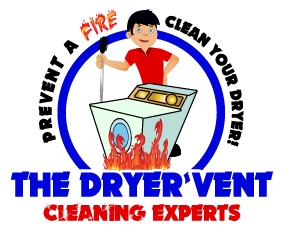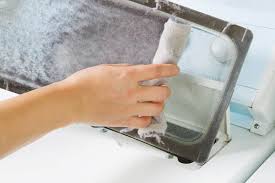
MAINTENANCE and BENEFITS
Play the video below and learn what the NFPA (National Fire Protection Association) recommends.
* IMPORTANT: In rare applications can the entire vent system be cleaned with a household vacuum. Typically, you need to hire an expert with the proper equipment, knowledge, and expertise to do the job properly.
Q: “I CLEAN MY LINT FILTER EVERY LOAD, DO I STILL NEED TO HAVE MY DRYER VENT CLEANED?”
A: “ABSOLUTELY!”

Most people either clean the lint trap filter before or after every load. Unfortunately, the lint trap does not catch all the lint. Additionally, as you clean your lint trap filter, some lint falls out of the trap and then falls into the lint trap cavity. The dryer then blows it into the vent piping. When a dryer is running, it is a very warm and humid environment, which is ideal for lint to stick to anything it touches. The lint not only sticks to itself, but also to any object(s) it comes in contact with. This is very similar to when you have seen cotton candy being put on the stick.
It does not matter if you keep your home spotless, the dryer vent inevitably becomes dirty and eventually clogged. Thus, potentially causing a fire, damaging your dryer, and increasing your operating costs.
Q: “HOW OFTEN SHOULD I HAVE MY DRYER VENT SYSTEM CLEANED?”
A: “IT ALL DEPENDS ON EACH HOUSEHOLD’S USAGE.”

Unfortunately, most of us don’t think about our dryer vent because it is out of sight and out of mind. The dryer vent needs regular maintenance and attention just like your home air conditioner, your teeth, or your vehicle. The same mindset should apply to your dryer vent.
- Annual cleanings are recommended for a household that does 5-7 loads per week.
- Semi-annual cleanings should be performed for households who do 8 or more loads per week.
- 18-24 months cleanings should be performed for those who only do 1-4 loads per week.
*Each household is different. There are multiple variables that can determine the actual recommended cleaning intervals. The above is only a general guideline.
BENEFITS:
- Greatly reduces the risk of a dryer fire.
- Potentially saves lives, your home, and personal property.
- In most cases, the cleaning pays for itself by reducing utility costs.

- Extends the life of your clothes dryer.
- Increases efficiency and performance.
- Saves money by reducing your utility costs.
- Extends the life of your clothing, towels, etc…
- Saves time by reducing the drying cycle.
- Keeps your family and home safer, providing you with PEACE OF MIND.
Click HERE to learn more.
*Licensed, Insured, and Worker’s Comp Compliant*© Copyright All Rights Reserved